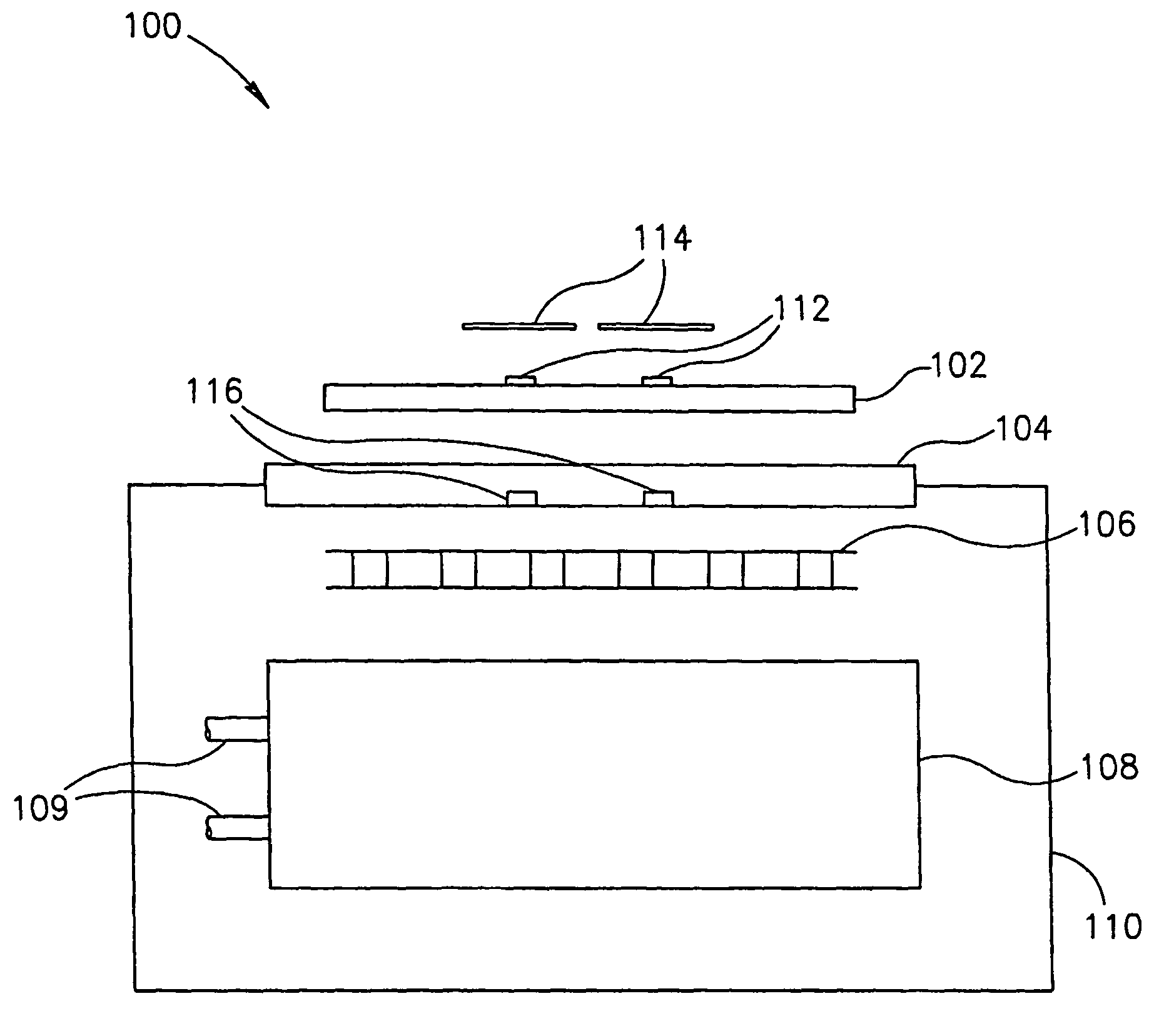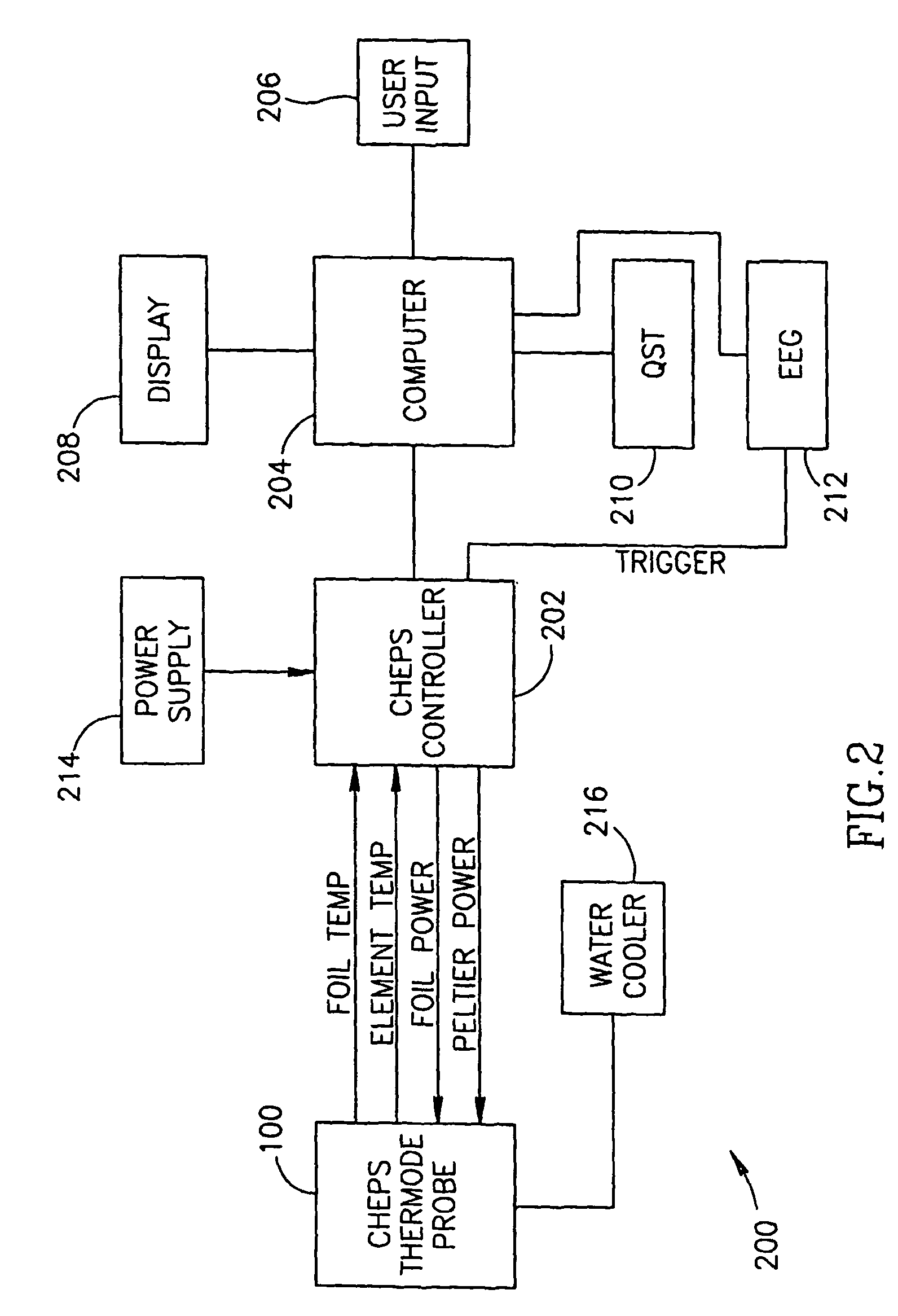Thermal stimulation probe and method
a tissue and probe technology, applied in the field of tissue stimulation, can solve the problems of c-fiber activity evaluation, c-fiber activity evaluation with subsequent recording, and difficulty in selecting activation with subsequent recording, and achieve the difficulty of determining if tissue about to be damaged serves a crucial brain function,
- Summary
- Abstract
- Description
- Claims
- Application Information
AI Technical Summary
Benefits of technology
Problems solved by technology
Method used
Image
Examples
Embodiment Construction
[0066]FIG. 1 is a schematic side illustration of physiological temperature stimulation probe 100 in accordance with an exemplary embodiment of the invention. The probe comprises a contact a heating element, which is in contact with the tissue to be stimulated. In an exemplary embodiment of the invention, the heating element is a resistive foil 102, for example, a foil of Nickel-Iron optionally covered by 25 or 50 microns of Kapton on all sides (or only in contact with the skin) and having an area of 24×24 mm. Optionally, the foil heater is controllable as a linear or two dimensional array of heating elements. In an exemplary embodiment of the invention, this heating foil is used to provide a rapid onset of heating stimulation. Optionally, one or more temperature sensors 112 are provided between the foil and the tissue, optionally shielded from the tissue, for example by a thin layer of Kapton 114. These sensors are optionally used to detect and act as sensors for control of the temp...
PUM
 Login to View More
Login to View More Abstract
Description
Claims
Application Information
 Login to View More
Login to View More - R&D
- Intellectual Property
- Life Sciences
- Materials
- Tech Scout
- Unparalleled Data Quality
- Higher Quality Content
- 60% Fewer Hallucinations
Browse by: Latest US Patents, China's latest patents, Technical Efficacy Thesaurus, Application Domain, Technology Topic, Popular Technical Reports.
© 2025 PatSnap. All rights reserved.Legal|Privacy policy|Modern Slavery Act Transparency Statement|Sitemap|About US| Contact US: help@patsnap.com



